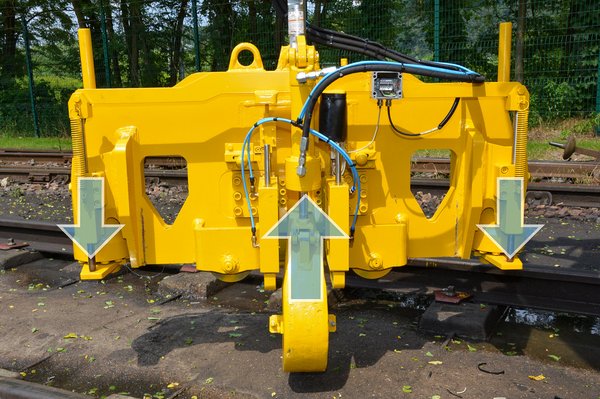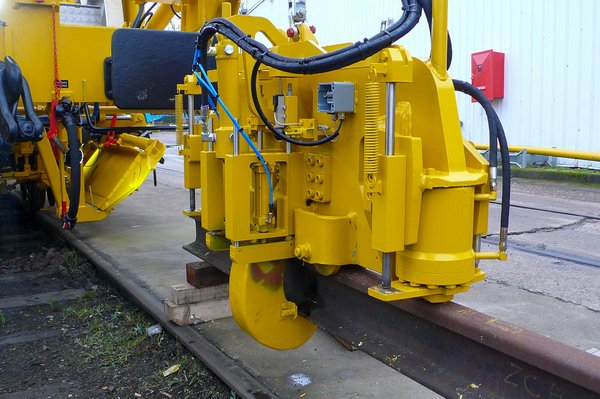Mature machine concepts for economic turnout maintenance are available with our universal tamping machines. Conventional as well as heavy high-capacity turnouts can be dealt with effectively and carefully with 4-rail tamping, pivoting suspension of the tamping unit, slewable tamping tines and combined lifting and lining unit with 3-rail lifting.
The 108-475 S Dynamic universal tamping machine for track and turnouts was delivered to Morocco in the summer of 2018. This machine type, too, has proven itself in France. Five machines of identical design are used by SNCF. The machine consists of two parts: a tamping machine and a trailer with dynamic track stabiliser and sweeper unit. The self-propelled lowerable DTS unit with adjustable unbalanced mass is an innovation. The unit runs on the rails on four flanged wheels, with two of these wheels being driven by a hydraulic motor and toothed belt. The speed of the unit drive is matched to the working speed of the cyclic-action tamping machine so that the stabiliser always moves forward and never stops. The vertical load is generated by two rollers pressed against the chassis frame. The contact pressure can be proportionately adjusted in accordance with the lowering value required.
ONCF has been working with a Unimat 08-475/4S levelling, lining and tamping machine for track and turnouts since 2013. With this machine concept, a complete turnout can be maintained not just completely, but also faster than previously. The result is a considerable reduction of track occupation and thus better utilisation of the available possessions – a significant factor in a heavily utilised rail network.
The multifunction machine of type EMV 97 LGV-2R, which is operated by the Moroccan ONCF, combines tamping unit, ballast plough and the STRAIT rail bending system. It has been available in Morocco since spring 2018.
After the STRAIT unit has been set down, the integrated measuring unit checks the defect and calculates the force needed, applied in several steps, to press the track defect out of the track permanently. Two hydraulically actuated struts support themselves on the rail surface with a spacing of 1.2 m, counteracting a hook which is applied below the rail foot. This bends the dipped or worn-down section upwards.

